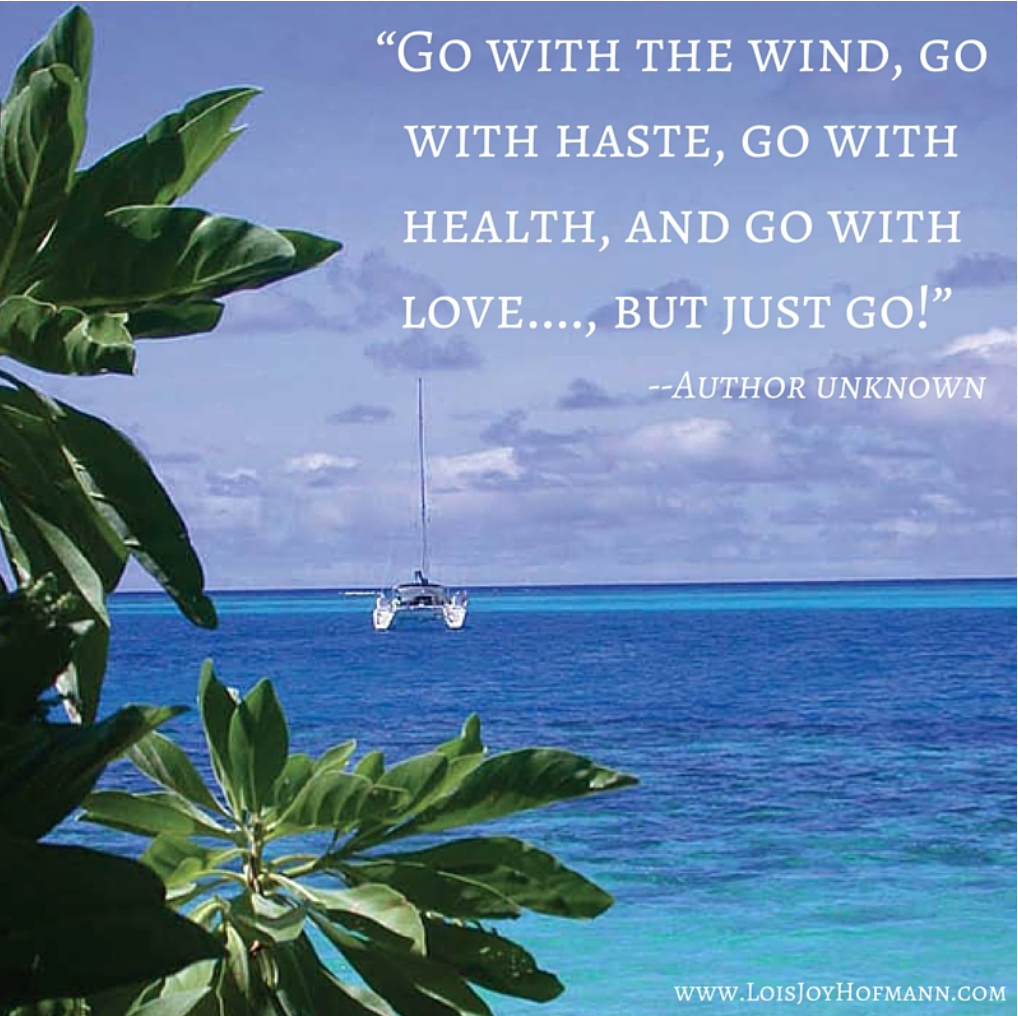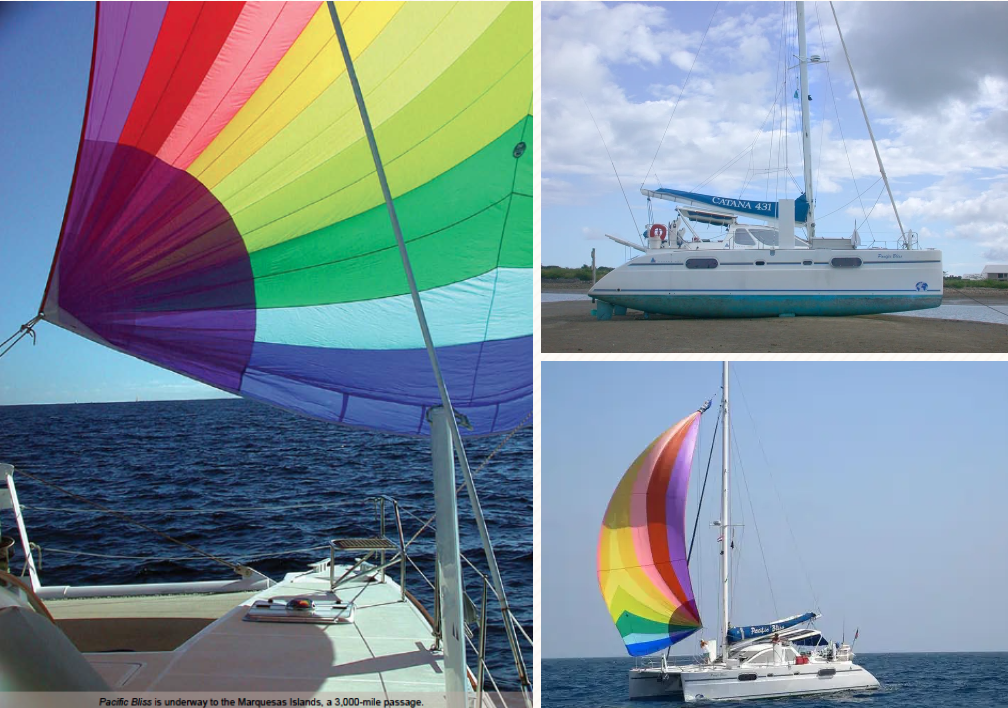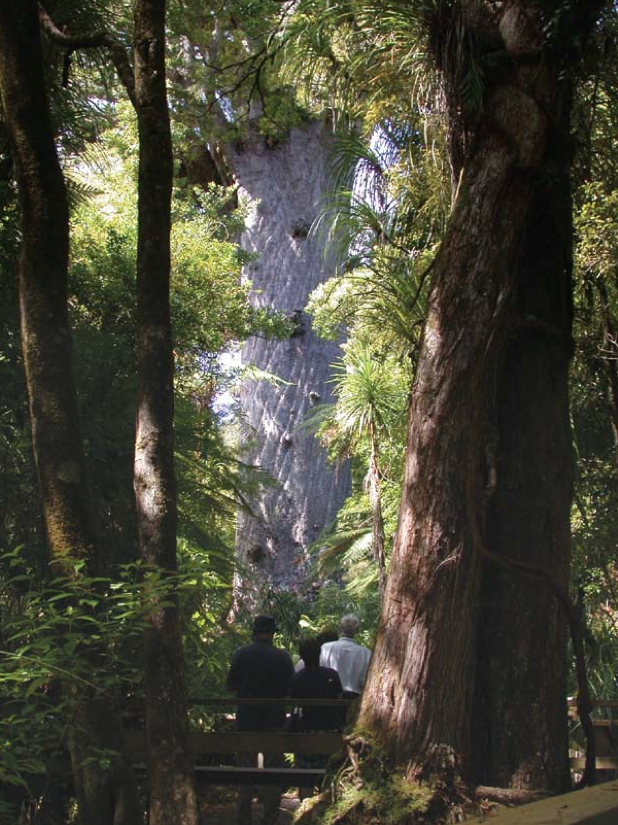“A kiss is just a kiss…and Bliss is who I miss,” Gunter sings as I hum along. I put my hand in his as we power walk around Sail Bay on the sidewalk fronting our condo in San Diego. It’s an unusually warm day in February, the lovers’ month. And we’re both thinking of another love, one we both shared.

Her name is Pacific Bliss. We knew her well. She’s the 43-foot Catana catamaran who faithfully sailed us around the world. On August 28, 2008, we crossed our path in Canet, France where we had started out eight long years before. Seven voyages. 34,000 miles. 62 countries. So many adventures and misadventures. So many Moments of Bliss.

Pacific Bliss on Sandbar

Pacific Bliss
Forlorn and seemingly forsaken, Pacific Bliss waited patiently on that same dock outside the factory where she was built. She pined for a new owner throughout the turbulent winter and the balmy Mediterranean spring while the stock portfolios of expectant buyers descended into a financial sinkhole.
Meanwhile, back in San Diego, my friends inquired, “In your entire circumnavigation, which was your favorite place?” I searched my memory bank, struggling for answers.
My most precious memories relate to people we met along the way. I admired how the teeming masses of Sri Lanka managed to eke out a living. Regal women in bold saris and determined men in crisp shirts defied the steaming climate and the diesel-polluted streets clogged with tuk-tuks, taxis, bicycles and even the occasional working elephant. When the 2004 tsunami devastated that lively southwestern coast I had photographed, I sobbed my heart out. I mourned the wizened “lace lady” in Galle who sold me the intricate tablecloth I will forever treasure. I remembered the blind man with the missing front teeth at the souvenir-stand-by-the-sea, the one who taught us the many uses of a coconut. I pictured the family with handsome dark-eyed sons who ran the turtle rescue operation south of Colombo. All gone now.
The remarkable Ni Vanuatu of Waterfall Bay, in the Northern Banks Islands, stole my heart. They have no electricity, no cars, and no landing strip. Their island is accessible only by boat. Yet they are the happiest, most generous locals we met. We had the good fortune to anchor off their bay while we attended a festival honoring the installation of a new chief. After three days of dancing, kava drinking, and teaching us how to make lap-lap (a pizza-like food that is their national dish) a chorus of young people belted out a song honoring the gathered sailors. Each one came forward to sing a special tribute, “My name is Joy and I love you, my name is Peter and I love you.” By the end of the song, we were all in tears.
I first fell in love with the Aussies during the Port2Port Rally from Vanuatu to Oz, sponsored by the town of Bundaberg. A farm girl from Wisconsin who grew up in the fifties, I found it easy to relate to the sugar cane farmers of Queensland and the cowboys working the vast ranches of the Outback. Many of them became our friends. We decided to spend an entire year in Oz, traveling the length and breadth of that great land.
I also find it impossible to rank the flora and fauna of my favorite places.
An avid flower-lover my entire life, my heart stopped when I viewed acres upon acres of winsome wildflowers north of Perth, then stopped again when a child guide in Borneo led me to one lone flower, two feet wide. The bloom was a rare Rafflesia—a flower that took nine months to mature.

Rafflesia, World’s largest flower, Borneo (this photo will likely appear in my third book, The Long Way Back
My heart soared when I came upon the ancient, graying Tane Mahuta, the Lord of the Forest, in Waipoua, New Zealand.
Which rates higher: the majestic rock the outback Aborigines call Uluru, rising red in the pale dawn, or the brooding widow’s peak of Mount Kota Kinabalu, the symbol of Borneo, “the land beneath the clouds?”
Were the deadly saltwater crocs and ubiquitous kangaroos of Australia more thrilling than the playful orangutans in the Sepilok Forest Reserve of Borneo, the cute baby elephants in Sri Lanka’s orphanage, or the magnificent tigers raised by the monks in Thailand’s lush interior?

Petting the tiger; this photo will likely appear in my third book, The Long Way Back
Because I could not begin to answer the question posed by my friends, I invented a stock, smart-ass answer: “My favorite place is the one I haven’t been to yet.” Then I would add a few lines about my next dream destination, such as: “Right now, I’m researching Bhutan. I like the idea that they have a national happiness index. Instead of our GNP, they have a GHP. I want to check that out.”
Then we sold the boat. They say that the two happiest days in a sailor’s life are when he or she buys the boat, and when it is finally sold.
On the one hand, I am happy to know that Bliss is no longer pining for Gunter and me, her Captain and Navigator of years gone by. She is no longer alone. Now she has other masters to care for: a family of four traveled from England to France to make her their home. They sailed her across the Atlantic to the Caribbean, as we did during our Maiden Voyage. Anticipating new adventures to come, enthused about new places to discover, they settled in. They learned to use her high-tech systems, evaluated her strength, and tested her resolve to keep them safe and secure, just as she did for us.
On the other hand, I’m sure of this: despite achieving my mission of sailing around the world, I’m still affected with wanderlust. I must continue to travel! I just may go around the world again, this time by air, land and sea. There might even be a few elephants, camels, mules and trains—and who knows what else—thrown into the mix. But it won’t be the same; this much I know. Any other mode of transportation from now on will be just that—mere transportation.
Because now I realize that this question is all wrong. It’s not about the people, places, flora, and fauna I loved, after all. It’s about who took us there. Pacific Bliss is where I left my heart.

About the Author: Lois and Günter Hofmann lived their dream by having a 43-foot ocean-going catamaran built for them in the south of France and sailing around the world. Learn more about their travel adventures by reading Lois’s award-winning nautical adventure trilogy. Read more about Lois and her adventures at her website and stay in touch with Lois by liking her Facebook page. Lois’s books can be purchased from PIP Productions on Amazon.












